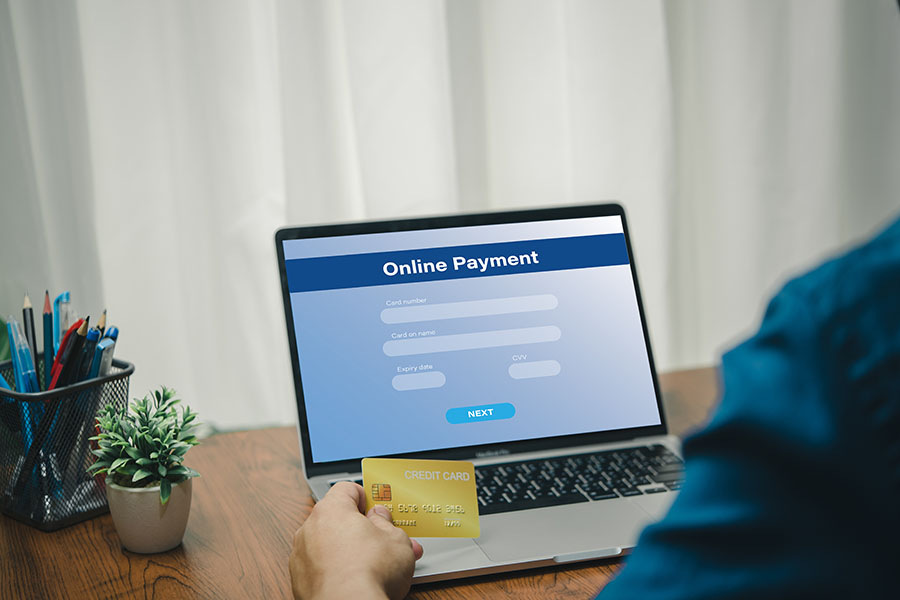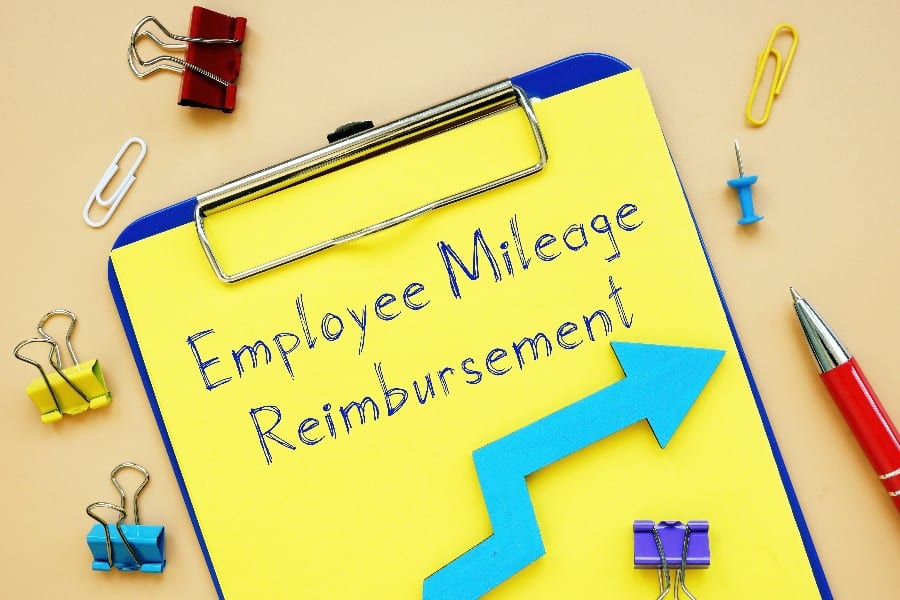
Though startup costs can vary from business to business, almost all new businesses will have at least a few expenses, such as getting a business license, setting up a website, and marketing. Some costs of starting a business are not required but are helpful, such as an initial emergency fund or equipment.
For the simplest businesses, expect an initial spend of a little over $12,000; subsequent monthly costs will be lower, as some one-time expenses (such as business registration/incorporation and equipment purchases) will already have been taken care of. However, on average, small business owners spend about $40,000 initially.
Business Startup Cost Overview
- Business entity registration: $500–$3,500
- Taxes: Federal corporate tax at 21%; state tax from 2.5%–11.5%
- Small business loans: Varies based on business type and loan source
- Equipment: Varies (Monthly point-of-sale software, for example, runs $0–$400+; internet and phone costs are around $150+ monthly)
- Inventory: Varies
- Employee wages: Varies
- Storefront: $127–$300 per square foot (purchase); $22 per square foot (rental)
- Utilities: $200–$1,150 per month (700 square-foot space)
- Marketing, advertising & research: From $50 for a traditional ad
- Website: $0–$900 monthly for software; $15–$50 per hour if outsourced
- Insurance: From $350
- (Optional) Emergency funds
Nearly all businesses, regardless of industry, will need to incur some startup costs for things like equipment, initial inventory, advertising, and marketing. Here are some common business startup costs you’ll need to factor into your plans when starting a business.
Legal Entity Registration
All businesses need to register their business as a legal entity―also called business structure―with the state it’s operating in. Registering as a legal entity protects the business owner’s personal finances if a lawsuit ever occurs against the business. Additionally, it protects your personal finances if the business goes bankrupt. On average, it costs $500 to $3,500 to register a business.
Limited liability companies (LLC), S corporations (S-corp), and C corporations (C-corp) are common business structures you can consider. To register a business, visit your state’s official business registration website.
Related:
Taxes
Taxes are easy for a new business owner to overlook. Federal corporate tax is at 21%; state tax runs between 2.5%–11.5%. However, as a general rule, put aside 25% of profits for taxes.
You may also want to budget for an accountant or certified public accountant (CPA) to file your business taxes. You can save on this cost if you file your own taxes. However, most business owners choose to have a professional organize and file their taxes.
Related:
- How to Calculate Business Taxes
- Business Tax Saving Tips
- How to Find an Accountant for Small Business
Loans
It’s possible to start a small business with minimal upfront capital—if you’re starting a bicycle repair shop in your own home or garage, upfront capital might need to cover just a few sets of tools, bicycle parts, and some print or poster advertising.
But you’ll need more upfront capital if your business has greater initial needs, such as advanced computer hardware and software, machinery and supplies, or vehicles. The most straightforward way to obtain this is by getting a small business loan. As a new business owner, you’ll have several different types of startup funding options available to you. You’ll need to prepare several requirements in preparation for taking out a loan.
It’s difficult to make a general estimate of how much a loan will cost you, as there are so many variables to consider: who you borrow from, your business type and its initial needs, timelines, interest rates, and more. You can put yourself in the best position possible by having a clear picture of how much you’ll need to borrow, and then approaching multiple lenders until you find the best terms for you.
Related:
Equipment & Technology
Equipment and technology are other cost factors that can be difficult to predict, as it depends highly on your business type and scale of operations.
A small marketing shop may need nothing more than a few laptops, a cleaning business will need materials and transportation, and storefronts will need a point-of-sale (POS) system or other way of accepting payments and processing orders.
Other equipment and technology you’ll need in order to accept payments and let customers reach you include credit card readers (from $59), a reliable high-speed internet connection (up to $100 per month), and a business phone number (up to $50+ per month).
Inventory
A product-based startup (as opposed to a service provider) will need initial inventory before opening for business. The exact quantities and corresponding costs will depend on exactly what you will be selling, and how much stock you want to have on hand.
If you are looking to purchase items from a wholesaler, your inventory costs will also depend on the terms that you and the supplier agree on. Meanwhile, if you plan to create the products yourself (handmade products, tailored clothing, herbs and plants, etc.), costs will depend on raw materials and how much product you intend to stock.
Related:
Employee Wages
In addition to payroll software, it’s wise to have enough cash to cover at least two months of employee wages before opening your business. This ensures you can cover payroll costs during any rough patches that may occur after you start your business.
For example, if you have three employees working at any given time, pay them on average $12 an hour, and are open 60 hours a week, that equates to approximately $20,000 ($12 x 3 x 60 x 9) you should have on hand. In addition to wage expenses, a good rule of thumb for any small business is always to have at least two months of all regular expenses saved in the bank.
Storefront
If you can’t run your business from your personal residence—like a retail shop, restaurant, salon, or gym—you’ll need to acquire storefront space.
When planning out your budget for opening a retail store, you’ll have to set aside funds for leasing or purchasing a space. On average, this costs $127 to $300 per square foot (for purchasing) and $22 per square foot (for rentals). However, this will largely depend on the location and store layout you choose for your business.
Utilities
If you’re opening a brick-and-mortar location, office utilities can add up quickly. For the average business with a physical location, budget $200 to $1,500 a month for utilities; this may include electricity, water, and trash.
Marketing, Advertising & Research
Marketing and advertising expenditures are unavoidable for any business these days. This is all the more true for startups that have no current market presence and no reputation to rely on just yet.
For marketing and advertising, you’ll need to consider not only the costs of creating and displaying the ad materials but also any additional expenses associated with market research. The best option for a business owner trying to get a startup off the ground while keeping costs down is to do all marketing and advertising in-house. You can create and edit marketing materials such as posts, images, and videos using services like Canva and CapCut.
New businesses with some extra starting capital, who prefer to outsource their marketing and advertising tasks, or who have gained some traction after doing this work in-house, can work with a marketing agency.
Here’s what marketing costs can look like:
- Traditional ad: From $50
- Email marketing software: $0–$50/month
- Email & graphic design: $5 to up to $1,000 per project
- Email-focused marketing agencies: $300–$500/monthly or $5–$100/project
- Paid social media ads: $1–$2 per click
Website Costs
Small businesses that want to establish brand presence and begin getting potential customers’ attention will benefit from having a website. The cost of creating a website will vary depending on what type of business you are running and what it needs, plus whether you’ll be designing it yourself from scratch or hiring a professional.
If you choose to design your website yourself, you’ll need a program to help you do so; Wix, our top pick among website builders for small businesses, offers a forever-free plan. Designing your own small business website will mean more work, but you’ll keep costs predictable and have greater control over exactly how your website looks. The DIY route can go anywhere from $0 up to $900 per month.
If you choose to hire a website designer and developer, this will cost you a fee—likely an hourly rate. Payscale and GlassDoor report that a website developer commands an hourly rate of around $15 to $50, with an average of about $40 per hour.
In either case, you may want to purchase a domain name for your upcoming website and secure it before someone else does. Whether you go the DIY or outsourcing route, you’ll also want to keep all the costs for creating a website in mind, as well as best practices for website design.
Insurance
Insurance protects a business owner against liability claims of a third party or employee. A common insurance expense for small businesses is general liability insurance, which protects businesses from injury claims issued by third parties, like customers.
General liability insurance typically starts at $350. If you have employees, most states require workers’ compensation insurance, which covers a worker injury on the job. Workers’ comp varies by state and the type of work; for example, in the retail industry, it can run between $590 to $1,500 annually.
Related: Small Business Insurance Costs, Coverage & Industries
Emergency Funds
An emergency fund is an amount of cash set aside to be drawn upon in case of unexpected but urgent events, such as illnesses, job loss, or the sudden breakdown of vital equipment. These funds should exist in the form of cash or liquid assets—so that the money can be accessed quickly and so that you won’t need to draw funds from sources that might hit you with high interest rates or cause problems in the future, like unsecured loans or retirement funds.
Building an emergency fund is simple, but not easy. Put away a certain amount of cash as often as you can, and don’t touch it except for emergencies. There are few fixed guidelines on how much cash your emergency fund should contain—and more cash is obviously better—but a general recommendation is to put away enough to keep your operations afloat for at least three months.
Related:
How to Save on Startup Costs
While paying a certain amount is inevitable when starting a business, there are avenues you can explore to reduce expenses and minimize your total startup cost. Here are some options to consider.
Outsourced vs In-house Tasks
Almost any task a business performs can be outsourced if the business owner chooses to do so. This can range from basic functions like accounting, marketing, and payroll to core tasks that define a business, such as content creation and other types of labor. And outsourcing isn’t going anywhere; revenue for general business process outsourcing in the US is predicted to hit a massive $152 billion by 2028.
Outsourcing tasks has pros and cons, but a common reason to do it is to save on costs. This can be especially helpful if the business is just starting out and the budget is tight, or if the business model lends itself to outsourcing anyway.
For example, a marketing agency in the United States might outsource much of its content writing to freelancers or full-time employees in the Philippines; this will save on employee wages (often to a significant degree) and thus on initial and ongoing costs for the US employer.
Similarly, there may be situations in which in-house work actually saves more money, either initially or in the long term. It’s up to the business owner to design and evaluate their business model, keep track of costs, and consider all the possible options to save money.
Renting vs Buying
For unavoidable costs such as computer equipment, software, and some kind of physical workspace, startup business owners have the option to rent or buy. Renting means lower payments in the short term, but you will not own the equipment, and you’ll be paying forever (or as long as you choose to continue renting).
Buying, on the other hand, will mean that you own the equipment or space outright. This necessitates a much larger initial cost if you are paying full price upfront (though you may be able to negotiate monthly or yearly payments), but it is often a better long-term solution because you will one day no longer need to make payments, but will still own and use the equipment. Again, it’s up to the business owner to crunch the numbers and figure out whether renting or buying is the better option for both short- and long-term savings.
Frequently Asked Questions (FAQs)
Read through the sections below for a quick summary of some common business startup costs, plus an estimate of how much money you’ll need to start.
Expect to spend a little over $12,000 for your startup initially. This will cover any equipment and technology required by the business; starting inventory if you sell products; small or large office spaces; and expenses for marketing, advertising, and a website.
This will vary greatly depending on many factors. However, a baseline starting capital of at least $3,000 will allow you to make headway with equipment and software, inventory, website design, and some marketing.
Bottom Line
Understanding some common startup costs before starting your business is important so that you can prepare enough capital to get things off the ground. You don’t want to be in a situation where you’re going back to the bank or investors for additional funds before you have any customers. It’s helpful to document each startup cost in a business plan to show you’ve created a thorough plan to determine the funds needed to open your business.




![accounting-software-implementation-guide-[+-free-checklist]](https://zabollah.com/wp-content/uploads/2024/04/13802-accounting-software-implementation-guide-free-checklist.jpeg)
